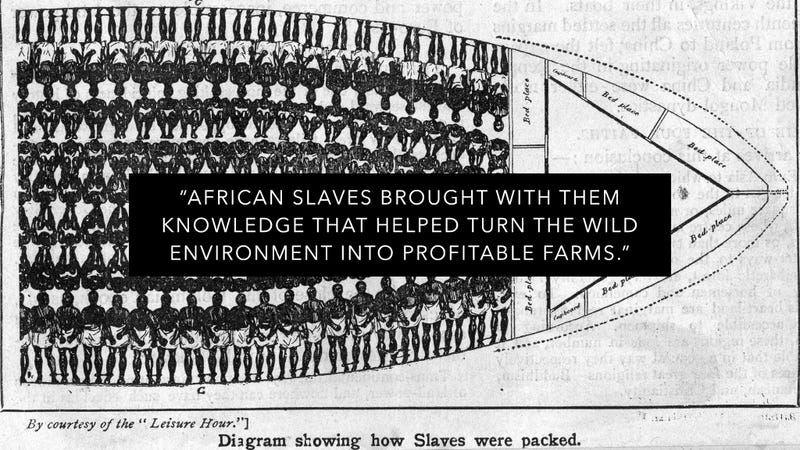Initially, some news outlets reported the textbooks omitted Jim Crow laws and the KKK altogether, but, as Texas Monthly pointed out in its September issue, that wasn't exactly the case.
Happily, though, publishers mostly ignored the board, according to Dan Quinn, of the Texas Freedom Network, an organization dedicated to countering what it sees as far-right activism. "I think publishers did a good job of making sure of the centrality of slavery," he says. Quinn, who perhaps more than anyone has sounded the alarm about the board's bias, was distressed to read national reports asserting incorrectly that Texas children wouldn't be reading about the KKK and Jim Crow. "The textbooks cover all of that," he says. Houghton Mifflin Harcourt's eighth-grade U.S. history textbook, for instance, includes a section on KKK terror and the postwar black codes that created "working conditions similar to those under slavery."
The magazine reassured its readers that the "travesty" of "partisan fiction" had been avoided and that the textbooks, though flawed, were far from an affront to the study of history. But, after examining copies of the 7th grade, 8th grade, and high school-level books obtained by Jezebel, it was clear that this curriculum is riddled with omissions, making frequent use of convenient, deceptive juxtapositions of slaveholder violence and the slave resilience. Sure, Texas's new textbooks aren't an outright travesty. But that doesn't mean they're anywhere close to good.
Slavery is mentioned only briefly in HMH's 7th grade textbook. It's not until 8th grade that the subject is expanded upon in a tone that suggests a general unwillingness to clearly state just how horrific of an institution it was. Passages that reference violence often transition to characterizations of slaves as a hopeful, god-fearing bunch whose faith and sense of community when not working or being punished almost negated the nightmarish realities of their daily lives. And, though the violence of slaveholders is mentioned—often with quotes by former slaves—it's generally followed by a reminder that their lives weren't all bad. Slavery, the book suggests, was only truly miserable some of the time. For adults, this combination of half-truths and omissions makes for an unpleasant read. For children, it's something worse: a disservice.
Just look at one of the first mentions of slavery in HMH's Texas United States History. (All emphases in quotes our own, and the illustrations that textbook quotes appear on are ours, not found in the actual textbooks.)
Chapter 3: The English Colonies, 1605-1774 | p. 77
The colonies had many small farms and some large plantations. Farms did well because the South enjoyed a warm climate and a long growing season. Many farms grew cash crops that were sold for profit. Tobacco, rice, and indigo—a plant used to make blue dye—were the most important cash crops.
The southern colonies' cash crops required a great deal of difficult work to grow and harvest. This meant a large workforce was needed. By the 1700s enslaved Africans, rather than indentured servants, had become the main source of labor.African slaves brought with them knowledge that helped turn the wild environment into profitable farms. Many had previous experience raising cattle and knew the method for clearing brush using fire. Slavery was a viciously brutal condition for many inhabitants of the southern colonies.
Africans were brought to America to be slaves, sure, but their specific skill set helped change the landscape and and improve the economy!
Apart from being too little, too late, that final sentence acknowledging slavery's brutality evinces the gotta-hear-both-sides structural dodge also found in the previous section, in which six paragraphs on the "horrible experience" of the Middle Passage and slavery are followed by four on its cultural upsides.
For example, the textbook explains some of the slave ship's brutal specifics: "The slaves were chained together and crammed into spaces about the size of coffins. The height between the decks was sometimes only 18 inches." And the introduction of American slavery is relatively mild, but clear:
The treatment of enslaved Africans varied. Some slaves reported that their masters treated them kindly. To protect their investment, some slaveholders provided adequate food and clothing for their slaves. However, severe treatment was very common. Whippings, brandings, and even worse torture were all part of American slavery.
However, the section closes with a rhetorical attempt to find some happy ending:


1 comment:
http://jezebel.com/heres-how-new-texas-public-school-textbooks-write-about-1726786557
Post a Comment